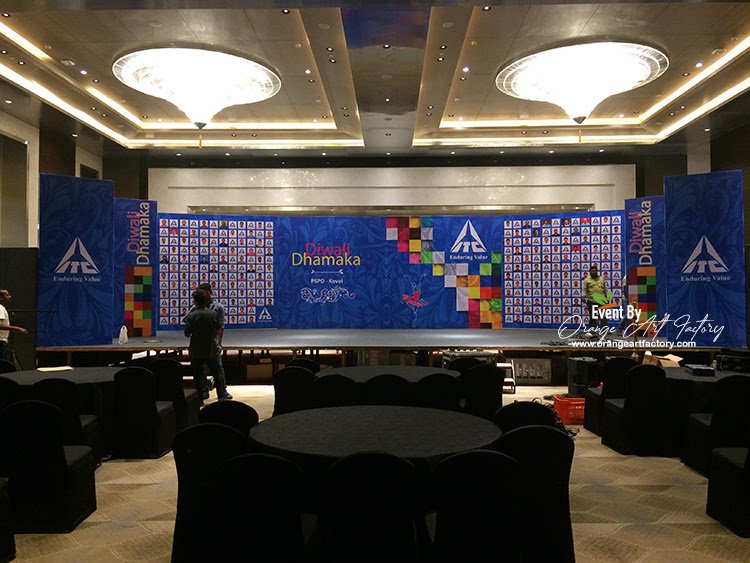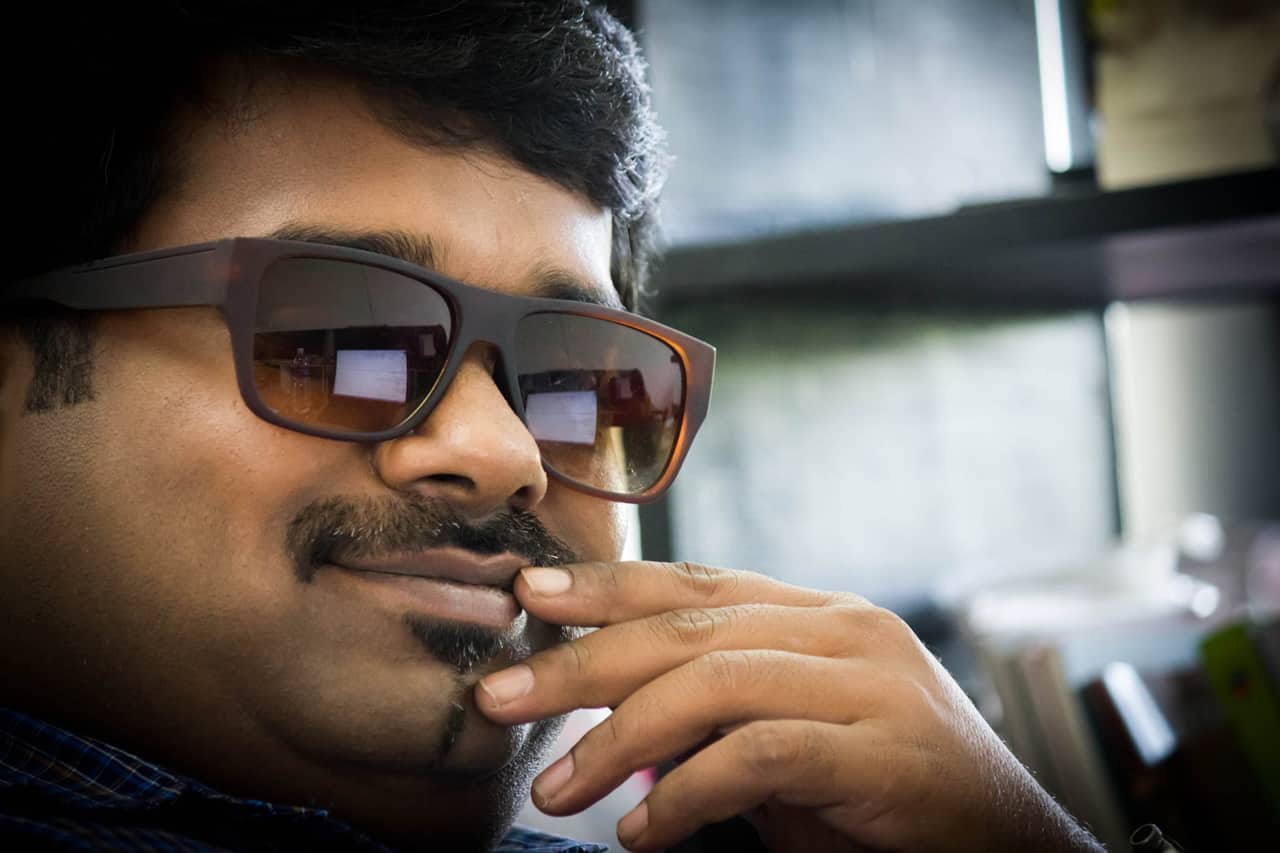What is an Event Stage Backdrop? Learn More About Different Types of Stage Backdrops for Your Events
Introduction to Event Stage Backdrops
An event stage backdrop serves as a critical element in event planning, offering both aesthetic and functional benefits. Essentially, an event stage backdrop is a decorative or thematic background set up behind the main stage area. It plays a significant role in enhancing the visual appeal of an event, providing a polished and professional look. The right backdrop can transform a simple stage into a captivating focal point, thereby enriching the audience’s overall experience.
Stage backdrops are versatile and used for a wide range of occasions. Commonly, used at weddings, where they create a beautiful and romantic ambiance that complements the ceremony. In corporate events, backdrops often feature branding elements such as logos, slogans, and company colors, providing an excellent opportunity for brand visibility and reinforcement. Concerts and theater productions also benefit from stage backdrops, which can set the scene, evoke the desired mood, and enhance the storytelling aspect of the performance.
The benefits of using a stage backdrop are manifold. One of the primary advantages is the creation of a thematic ambiance. Whether it’s a whimsical wedding, a formal corporate meeting, or an electrifying concert, the backdrop sets the tone and context for the event. Additionally, stage backdrops offer valuable branding opportunities. For businesses, incorporating logos, taglines, and brand colors into the backdrop design ensures consistent messaging and boosts brand recognition.
Moreover, a well-designed stage backdrop can significantly improve the audience’s experience. It helps in focusing attention on the stage, minimizes distractions, and enhances visual engagement. By creating a visually cohesive environment, a backdrop ensures that the event’s theme is seamlessly integrated into the overall design, making the occasion more memorable for attendees.
Types of Event Stage Backdrops
Event stage backdrops play a crucial role in setting the tone and aesthetic for any event. There are several types of stage backdrops, each with its own unique characteristics, advantages, and ideal use cases. Understanding these options can help you select the best backdrop for your specific event needs.
Fabric Backdrops: Fabric backdrops are a versatile and popular choice for many events. They are typically made from materials such as polyester or muslin, which are durable and can be easily transported. One of the key advantages of fabric backdrops is their reusability, making them a cost-effective option for multiple events. Additionally, fabric backdrops can be easily customized with various colors, patterns, and textures to fit the theme of the event. They are ideal for indoor events where a soft, elegant look is desired.
Vinyl Backdrops: Vinyl backdrops known for their high-resolution graphics and vibrant colors. Made from a durable, flexible material, vinyl backdrops can withstand outdoor conditions, making them suitable for both indoor and outdoor events. The printing technology used for vinyl allows for intricate designs and detailed images, which can enhance the visual impact of the event stage. Vinyl backdrops are also easy to clean, adding to their longevity and practicality.
Digital Backdrops: Digital backdrops, often involving LED screens, offer dynamic and interactive displays. These backdrops can showcase moving images, videos, and animations, providing a visually engaging experience for the audience. Digital backdrops are highly customisable and changed instantly, making them perfect for events that require frequent content updates or multiple themes. They are particularly popular for concerts, corporate events, and large-scale presentations where dynamic visuals can significantly enhance the overall experience.
Custom-Designed Backdrops: For a truly unique and personalized event theme, custom-designed backdrops are the ideal choice. These backdrops are tailored specifically to the event’s requirements, allowing for complete creative freedom. Whether it’s a corporate logo, a specific color scheme, or a thematic design, custom backdrops ensure that the event stands out. Made from various materials, including fabric, vinyl, or even combined with digital elements, offering both versatility and exclusivity.
Each type of event stage backdrop offers distinct benefits that can cater to various event themes and requirements. By understanding the characteristics and advantages of fabric, vinyl, digital, and custom-designed backdrops, event planners can make informed decisions to create a memorable and visually appealing event experience.
Choosing the Right Stage Backdrop for Your Event
When it comes to selecting the perfect stage backdrop for your event, several factors demand careful consideration to ensure a cohesive and visually appealing experience. First and foremost, the event’s theme plays a pivotal role in determining the backdrop. Whether it’s a corporate conference, wedding, concert, or gala, the backdrop should harmonize with the overall theme, setting the right tone and ambiance.
The size of the venue is another critical aspect. A backdrop that is too large can overwhelm a smaller space, while an undersized backdrop may appear insignificant in a vast venue. It’s essential to measure the stage dimensions and choose a backdrop that fits proportionately, ensuring it enhances rather than detracts from the overall setup.
Budget constraints also influence the choice of a stage backdrop. While elaborate custom backdrops can make a striking impression, they may not always be feasible. In such cases, consider cost-effective alternatives that still deliver visual impact, such as printed banners, fabric drapes, or modular backdrops used for multiple events.
Technical requirements, including compatibility with lighting and AV equipment, are paramount. The backdrop should complement the lighting design, avoiding materials that cause glare or reflections. Additionally, designed to accommodate any AV components, such as screens or projectors, ensuring they seamlessly integrate into the overall stage setup.
Matching the backdrop with the overall event decor is vital for a unified look. It should blend with the color scheme, floral arrangements, and other decorative elements. Moreover, consider its impact on photography and videography. A visually appealing backdrop can enhance the quality of photos and videos, providing a memorable backdrop for capturing key moments.
Color Selection:
Examples of successful stage backdrop choices include using lush, green foliage backdrops for outdoor weddings, sleek, branded panels for corporate conferences, and vibrant, themed designs for concerts and festivals. Each scenario highlights the importance of aligning the backdrop with the event’s unique characteristics, ensuring a visually captivating and harmonious experience.
Setting Up and Maintaining
Setting up stage backdrops requires meticulous planning and precision. Whether opting for a professional installation or a DIY approach, understanding the installation process is crucial. Begin by assessing the venue’s dimensions and the specific requirements of the event. This includes measuring the stage area to ensure the backdrop fits perfectly. Next, secure a sturdy support structure, such as a truss or backdrop stand, to hold the backdrop in place. Attach the backdrop using clamps, hooks, or grommets, ensuring it is taut and wrinkle-free.
One common challenge during setup is dealing with wrinkles. To overcome this, use a steamer or iron on a low setting to smooth out any creases. It’s also essential to position the backdrop correctly to avoid any misalignment that could detract from the event’s visual appeal.
Professional Installation
The importance of professional installation cannot be overstated, especially for large or intricate backdrops. Professionals bring expertise and specialised equipment, ensuring a flawless setup. However, for smaller events or simpler backdrops, DIY installation can be a cost-effective option if done carefully.
Maintenance of stage backdrops is equally important to ensure they remain in pristine condition throughout the event. Proper storage is key; store backdrops in a cool, dry place to prevent mold and mildew. Avoid folding the backdrop to minimise creases; instead, roll it up carefully. Regular cleaning is also vital. For fabric backdrops, use a gentle detergent and hand wash if possible, then air dry. Vinyl backdrops can be wiped down with a mild cleaner and a soft cloth.
Handling precautions are necessary to avoid damage. Always use clean, dry hands when touching the backdrop to prevent stains. During transportation, protect the backdrop with a cover to shield it from dust and dirt.
Common issues such as tears or fading can be mitigated with prompt attention. Small tears can be repaired using fabric glue or patches, while fading can be reduced by keeping the backdrop away from direct sunlight when not in use. Regular inspections before and after each event can help identify and address these issues early.
Looking for corporate event managers for your event? Then call us!
Learn more about Orange Stall Fabrication and Designing




